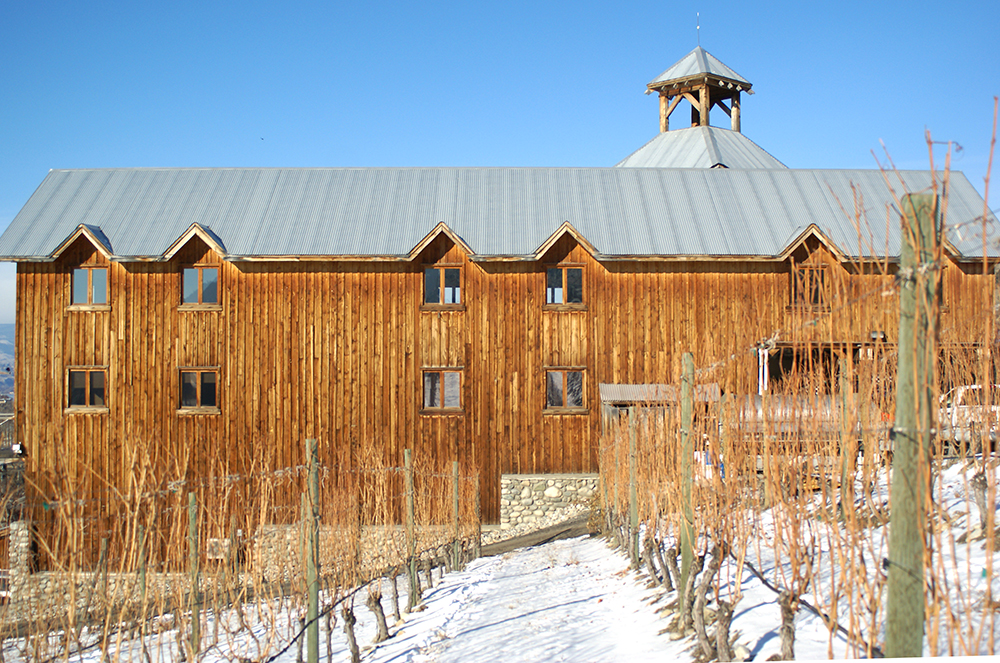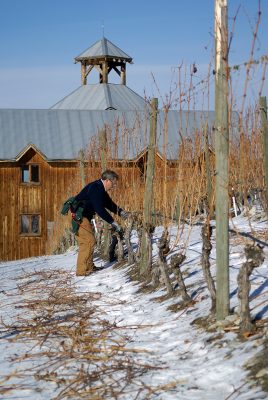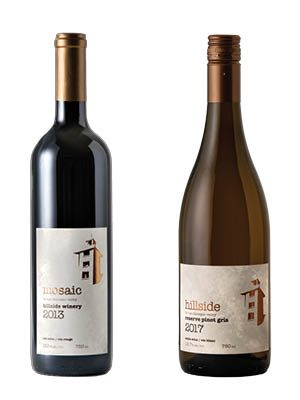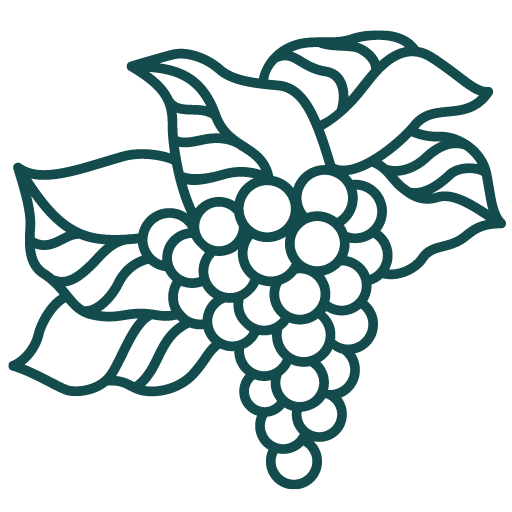
Wine Culture Magazine

All is calm, but all is not quiet behind the scenes at Hillside Winery in the winter.
When you conjure up images of B.C. wine, it’s easy to picture golden, sun drenched hills, sparkling lake views and crisp glasses of Pinot Gris and Chardonnay. Snow flurries, bare vines and frost-nipped outdoor tanks? Not so much.

Once the vines have fully shut down they are pruned.
Each year, B.C. wineries welcome more than a million visitors—the majority of that volume falling between spring and the fall harvest. But, like any agricultural pursuit, winemaking is a year-round job. When the visitors stop flowing, the winemaking keeps going.
So what happens behind the scenes?
Temperatures are hovering at an unseasonably warm seven degrees when we reach winemaker Kathy Malone at Hillside Winery, located in the spectacular Naramata Bench near Penticton.
Harvest is finished and the last of their red grapes are about to be drained and pressed off the skins.
In the cellar, the smell of hot oak from steam sanitizing barrels wafts through the air—a sure sign it’s winter for the dozen or so staff still on the grounds. Soon, Malone and her colleagues will be consumed with barrel work, secondary fermentation, racking and more barrel work. They’ll be putting together the final blends for the whites and stabilizing them for bottling, letting the wine sit in the tanks outside to allow Mother Nature to do the chilling.
Once the vines have fully shut down (and their carbohydrates have moved into the roots to store energy for the growing season to come) they will be pruned. By early January, bottling and labelling begins.
But there’s one winter activity the veteran winemaker does most: checking the weather forecast.
“There’s always some reason to worry,” she chuckles, “and so winemakers joke between themselves about, like, how many times do you check the forecast a day? And it’s probably once an hour.”

Hillside winemaker Kathy Malone.
She reveals that she only truly relaxes for a few short weeks in early summer.
“Because [Hillside] has the tanks outside, I have to keep aware of the outside temperatures all the time. I need to know how exactly how much heat a tank might need,” she explains.
Malone is also on ice wine watch, waiting for temperatures to consistently sit below minus nine degrees so the team can pop back into the vineyard to harvest.
But even once that’s done, cautions Malone, they then have to be concerned about vine death. If temperatures stall for more than a few days below minus 22, the vines are at risk.
“Winemakers joke between themselves about, like, how many times do you check the forecast a day? And it’s probably once an hour.”
The winemaker, who spent numerous seasons at Mission Hill before joining the Hillside team, recalls that the season she started at Hillside, 2008, saw a 25-year-old Merlot vineyard in nearby Oliver devastated by extreme low temperatures. Hillside suffered some bud and vine damage, but because it’s located above Okanagan Lake, their vineyard was protected from the cold. The plants in Oliver, however, were largely destroyed.
“It was just awful to see. Shocking,” she says. “And that’s after 25 years of people thinking, ‘Oh, Merlot is really hardy. We don’t have any trouble with it in B.C.’ And then all of a sudden. It’s because we’re right on the cusp.”
Hillside didn’t get off too easy the following year, either. In 2009, temperatures fell to minus 10 around Thanksgiving, and they hadn’t picked any of their red grapes.
“I was just waiting for that perfect ripeness on all of our reds,” Malone recalls, wistfully. “And then the picking decisions became triage—what had to come in first? And we had no idea—no one in the valley had any idea—what the quality would be like that year because we hadn’t had that experience where all of the reds froze on the vines before they were picked. Fortunately it had been a really hot summer, so the fruit was well and truly ripe.
“If you’re ever offered an ’09 Okanagan red, jump on it,” she adds, “because they were beautiful wines.”
 But since those are somewhat hard to come by, the 2013 Mosaic— Hillside’s flagship Bordeaux-blend—is a perfect alternative for holiday gift giving. For a “winter white”, the stunning 2017 Reserve Pinot Gris—which received the Platinum medal in 2018 Lieutenant Governor’s Awards—is styled more as a food friendlywine. With lees stirring and some time in the barrel, the Reserve Pinot Gris has a complexity not often found in the bright, thirst-quenching wines of summer—such as the unoaked Pinot Gris and Gewürztraminer, served super cold and super crisp.
But since those are somewhat hard to come by, the 2013 Mosaic— Hillside’s flagship Bordeaux-blend—is a perfect alternative for holiday gift giving. For a “winter white”, the stunning 2017 Reserve Pinot Gris—which received the Platinum medal in 2018 Lieutenant Governor’s Awards—is styled more as a food friendlywine. With lees stirring and some time in the barrel, the Reserve Pinot Gris has a complexity not often found in the bright, thirst-quenching wines of summer—such as the unoaked Pinot Gris and Gewürztraminer, served super cold and super crisp.
“Our Reserve Pinot Gris is more of a red-wine-lovers wine,” says Malone, “great for pairing with winter meals—and fireplaces.”
Hillside’s tasting room & bistro are closed during the winter months. Their wines are available online year-round with direct delivery across Canada.
Hillside Winery
1350 Naramata Road, Penticton
(250) 493-6274
For more information, visit hillsidewinery.ca

Vitis is is an indispensable seasonal guide for vintners, sommeliers and weekend imbibers alike that is dedicated to British Columbia’s rapidly evolving wine culture.

Vitis is is an indispensable seasonal guide for vintners, sommeliers and weekend imbibers alike that is dedicated to British Columbia’s rapidly evolving wine culture.
Copyright © 2025 - All Rights Reserved Vitis Magazine